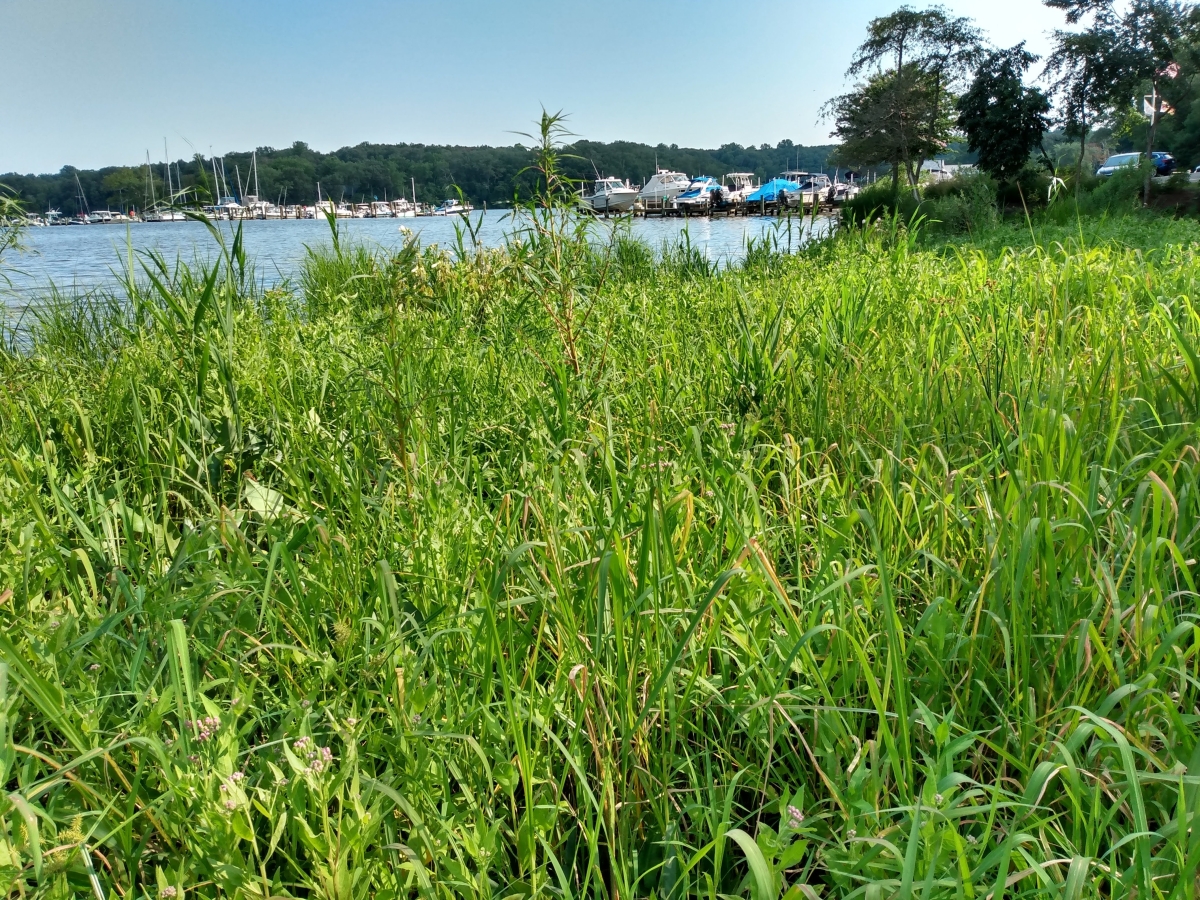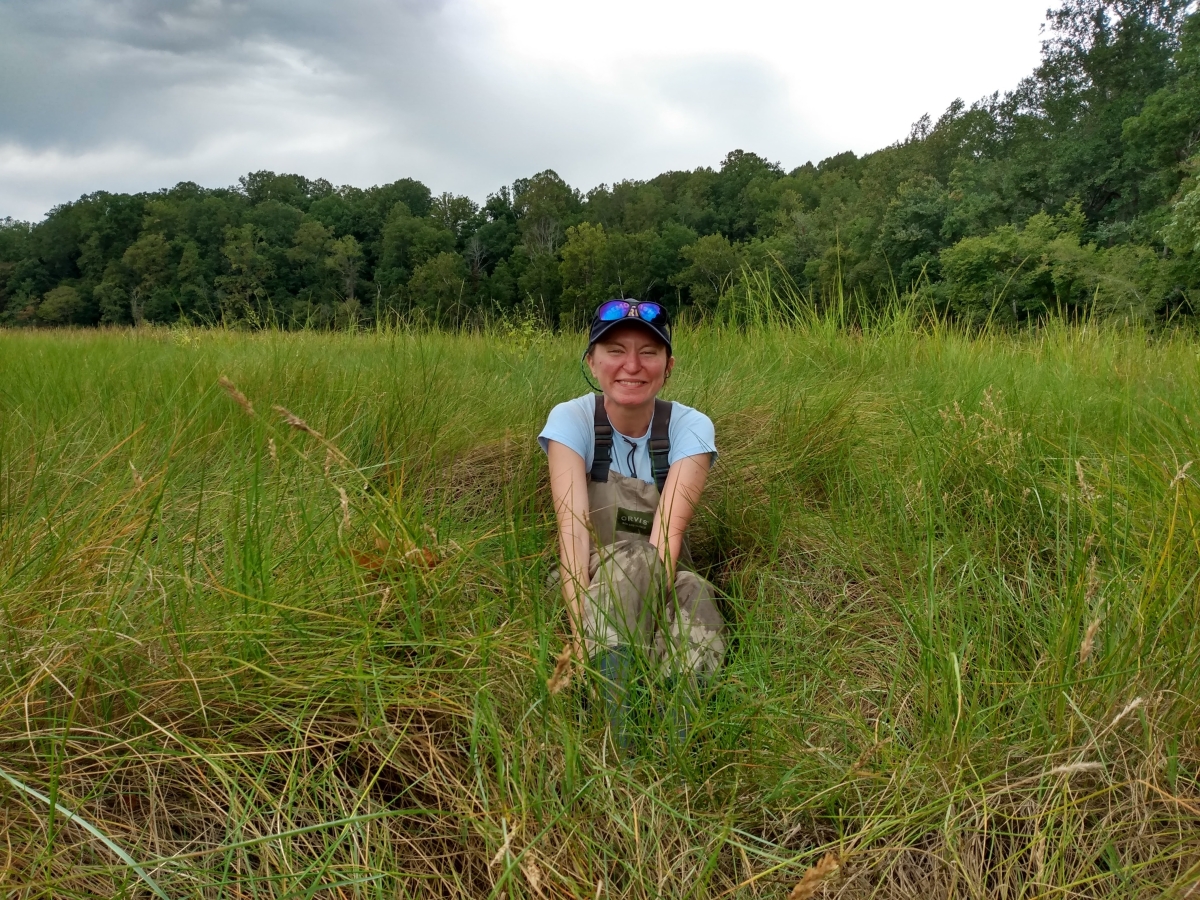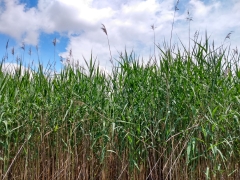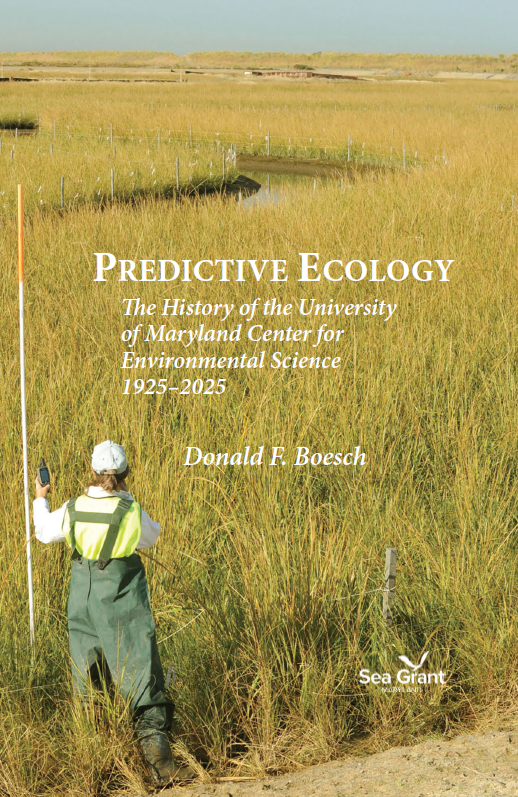Knauss legislative fellowships in Congress help build careers — and they're fun and educational. See our video and fact sheet for details.
Managing Phragmites: Why should I care about a common wetland grass?
Phragmites australis is a non-native grass that has become a dominant wetland plant in Maryland’s Chesapeake Bay region in just a few decades. It is pervasive in wetlands across the United States. Phragmites is a powerful ecosystem engineer that absorbs contamination and stores carbon, but it is also a major threat to native plants. The most common variant of this grass in the US was introduced from Europe and is the tallest grass in the Maryland region, growing up to 20 feet tall. Its underground presence is even more impressive, with a thick underground network of rhizomes that can grow up to 30 feet in a year. I study management strategies for Phragmites as part of my Sea Grant research project, and it has changed the way I relate to this plant.

At my previous job, I worked on contaminated Superfund sites along the East Coast, collecting water and soil samples from rivers where raw sewage, oil, and industrial waste mixed. Phragmites was often the dominant, and sometimes the only, plant at these places. It is incredibly hardy and plucky; it can tolerate high levels of pollution and grow in extremely acidic soils where few other things can survive. But the same traits that make Phragmites so successful—its rapid growth and tolerance of a variety of environmental conditions—have also enabled it to outcompete native plant species. Wetlands are home to special plant communities that can only live in these wet, marshy places. As many East Coast wetlands transform into expanses of only Phragmites, we lose our native plants.
When I worked at contaminated sites, I was skeptical of Phragmites management. A non-native plant seemed like a minor problem compared to toxic chemicals in the water. Besides, effectively managing a non-native species—just like cleaning up contaminated rivers and other forms of environmental management—typically requires an immense amount of labor, money, and time. It reminds me of the children’s story, The Lady Who Put Salt in Her Coffee. To remove the salt, a chemist adds chlorate of potassium, carbonic acids, arsenic, and other chemical concoctions, but the coffee only tastes worse. An herbalist adds wild thyme, caraway seed, and catnip, but the coffee tastes stranger with each addition. The story ends happily when the lady makes a fresh cup of coffee.
Of course, we can’t get a fresh start with an ecosystem. And sometimes restoration efforts just generate more waste and emissions, don’t solve the problem, and can even create new problems. Certain Phragmites management efforts like mowing can lead to Phragmites returning with increased vigor. There have been instances of Phragmites eradication leading to secondary invasions of other non-native species. Because of the challenges of managing Phragmites, it can be easy to give up.

But sometimes, restoration works. It is possible to remove Phragmites and sometimes, a diversity of native species returns—especially in smaller, minimally degraded patches. In this Sea Grant project, our research team removed relatively small stands of Phragmites in areas near native vegetation. After cutting Phragmites, we covered the ground with black plastic sheeting to prevent regrowth. Others have shown that repeated herbicide applications (done in a targeted way in certain seasons to avoid impacts to other species) can also work.
At many sites, we witnessed the return of native plant communities. The wetlands repopulated with hibiscus flowers, wild rice, and other native grasses, sedges, and wildflowers. The multitude of plants support a variety of different birds and other animals with different food and habitat requirements. In addition, diverse ecosystems are more resilient to disturbance. For example, if a new pest wipes out a single species, other species will be able to fill the empty ecosystem niche.
Our project also made me appreciate the cultural benefits of plant diversity. It was rewarding to see local communities enthusiastic about the project and the return of native plants. Many volunteers helped us remove Phragmites and plant native species. One time when I was collecting soil samples, two children ran out of their house to talk to me because they wanted to know about the wetland and the project that they watched through their window. One of our project’s leaders, who has worked in Maryland coastal wetlands since the 1970s, personally witnessed Phragmites’ expansion each year as it replaced the native marsh that was formerly home to an array of grasses, sedges, rushes, and wildflowers.
After working on this Sea Grant project, I see more value in managing Phragmites in cases where there is a vibrant native marsh to preserve, and where its spread can be feasibly contained. When I only visited contaminated wetlands filled with Phragmites, I didn’t know about the rich diversity of native coastal marshes. After wading through mud surrounded by yellow water lilies and lounging on soft carpets of saltmeadow cordgrass during field research, I’ve learned what we have to protect. Phragmites is an incredible plant, but we don’t want it to become our only wetland plant.
Top Image: Phragmites australis, a non-native wetland grass. Photo: Sylvia Jacobson
See all posts to the Fellowship Experiences blog


